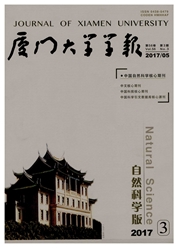

 中文摘要:
中文摘要:
毛细管电色谱具有高分离效率、多种保留机制和高选择性的优点。近年来,利用毛细管电色谱进行对映异构体的手性拆分受到了广泛关注。相对于传统的填充柱和开管柱,整体柱在手性拆分方面具有显著优势。与手性硅基整体柱相似,手性有机聚合物整体柱由于具有大孔,可产生较高的流速而压降较小。该文综述了近十年手性有机聚合物整体柱制备方法的研究进展,将手性有机聚合物整体柱的制备方法分为"原位聚合法"和"手性修饰法"两种,虽然前者制备简单并广泛应用于早期研究,但聚合混合液成分的微小改变即可引起最终聚合物的形态变化,并且大部分带丙烯基的手性选择剂较难从市场购买。因此,手性修饰法因作为手性选择剂基质的整体柱制备且优化只需进行一次的优势而受到普遍关注。亲核取代、杂环开环和点击化学是常用的修饰手段。该文总结了这两种制备方法的应用,同时对未来的研究方向提出参考性意见。
 英文摘要:
英文摘要:
Capillary electrochromatography(CEC) is a new separation technique that has the advantages of both capillary electrophoresis(high efficiencies) and HPLC(mobile and stationary phase selectivity).The application of CEC for enantioseparations has received much more attention in recent years.Chiral monolithic columns can avoid the problems encountered in chiral open-tubular and chiral conventional packed columns.Similar to chiral silica-based monoliths,chiral organic polymer-based monoliths possess large pores which allow convective flow of mobile phase and result in high flow rates at reduced pressure drop.The present review summarizes the recent development in preparation of chiral organic polymer-based monoliths and their applications for enantioseparations by capillary electrochromatography.The preparations of chiral organic polymer-based monolithic columns are classified as in situ polymerization approach and chiral post-modification approach.The former is simple and mainly adopted by the early researchers,but its application is limited by some of its disadvantages,e.g.the morphology of the monolith is very sensitive to the variation of the composition of the polymerization mixture,moreover,most of the allyl chiral selectors used are not commercially available.Whereas,in the chiral post-modification approach,once the monolith column is prepared and optimized,it can be used as the substrate for immobilization of various chiral selectors,thus it has received much concern in recent years.Nucleophilic substitution,heterocyclic ring-opening and click chemistry are generally used modification means.In this review,the application of the these two preparation methods are summarized and in addition,some research directions for the future are suggested.
 同期刊论文项目
同期刊论文项目
 同项目期刊论文
同项目期刊论文
 期刊信息
期刊信息
